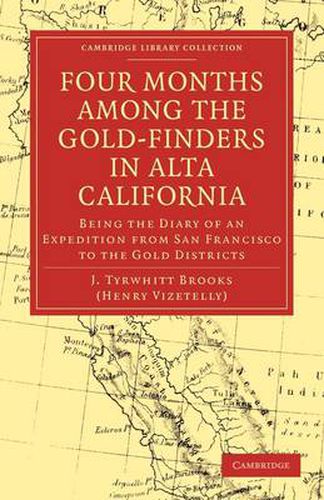Readings Newsletter
Become a Readings Member to make your shopping experience even easier.
Sign in or sign up for free!
You’re not far away from qualifying for FREE standard shipping within Australia
You’ve qualified for FREE standard shipping within Australia
The cart is loading…






J. Tyrwhitt Brooks was a pseudonym of the nineteenth-century publisher and journalist, Henry Vizetelly (1820-94). Born in London, Vizetelly was apprenticed to a wood engraver as a young child. He entered the printing business and helped found two successful but short-lived newspapers, the Pictorial Times and the Illustrated Times. His Four Months among the Gold-Finders, published in 1849, was a commercial and critical success on both sides of the Atlantic. It purported to be a genuine diary about the Californian Gold Rush, and was widely accepted as such. However, he admits in his 1893 autobiography, Glances Back Through Seventy Years (also reissued in the Cambridge Library Collection) that it was an elaborate hoax. The supposed author was a doctor (whose testimony would be considered reliable) who had found and then lost a fortune. The Times reviewed it enthusiastically and at length as a morality tale for its time.
$9.00 standard shipping within Australia
FREE standard shipping within Australia for orders over $100.00
Express & International shipping calculated at checkout
J. Tyrwhitt Brooks was a pseudonym of the nineteenth-century publisher and journalist, Henry Vizetelly (1820-94). Born in London, Vizetelly was apprenticed to a wood engraver as a young child. He entered the printing business and helped found two successful but short-lived newspapers, the Pictorial Times and the Illustrated Times. His Four Months among the Gold-Finders, published in 1849, was a commercial and critical success on both sides of the Atlantic. It purported to be a genuine diary about the Californian Gold Rush, and was widely accepted as such. However, he admits in his 1893 autobiography, Glances Back Through Seventy Years (also reissued in the Cambridge Library Collection) that it was an elaborate hoax. The supposed author was a doctor (whose testimony would be considered reliable) who had found and then lost a fortune. The Times reviewed it enthusiastically and at length as a morality tale for its time.